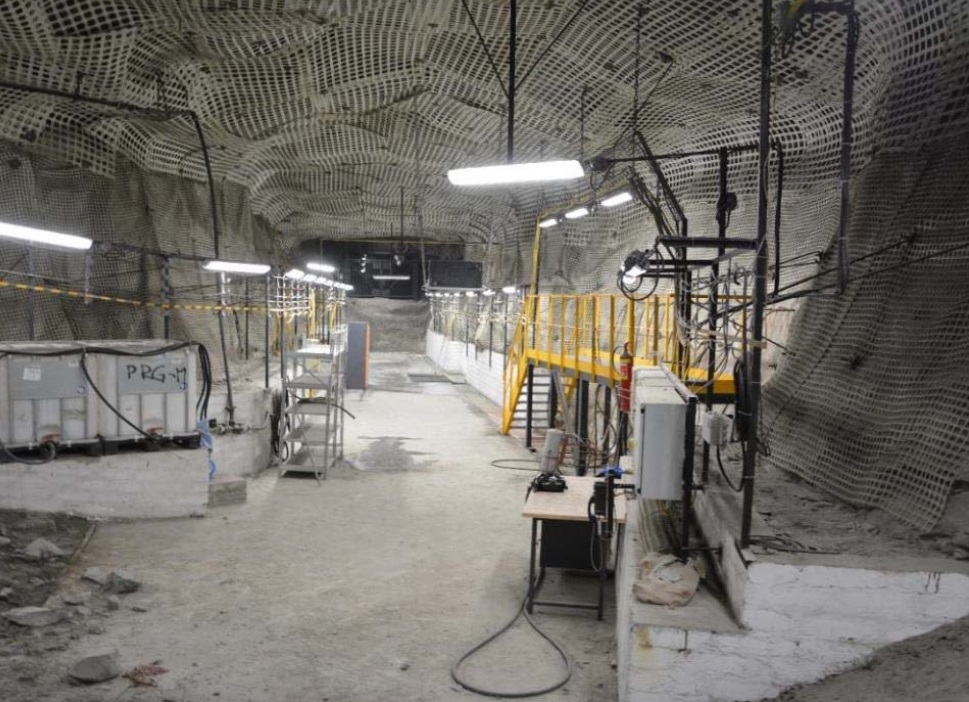On July 6 2018, the BIOMOre project had its final event in Brussels. The workshop was attended by some 45 people. The organisers said it was a very successful meeting, because the participants “recognised the amount and quality of results of the project work.” After keynote speeches from the EIT RawMaterials and the EASME of the European Commission, presentations were given about all main topics of the project, ie the development work in lab-scale and the underground tests, the modelling toolbox, the work on sustainability assessment of the BIOMOre process and finally the conditions for the economic viability of the process. In the afternoon, the participants and project partners discussed about the potential future of the BIOMOre process. Several application scenarios were discussed. “The main outcome of the discussion was that we should focus on the major challenges for the process, ie generation of sufficient permeability for the in-situ operation.”
In more detail, the presentations given included a summary of the process outlook and five potential options for application of the BIOMOre process. The first concerns drilling from surface into a deep laying ore body and apply (hydro) fracturing. This was the original intention of BIOMOre. During the research phase, it turned out that quite a number of conditions must be met for this option. The assessment of various deposits in Europe (part of the project) is still ongoing. Second is drilling from surface into a deep laying orebody without fracturing.This option can be applied to deposits that already have a significant permeability and porosity which can occur in sedimentary formations. Third is to apply the BIOMOre process in open cast mines using horizontal drilling. This would avoid the vertical drilling and has the potential to exploit deposits without major preparatory work. Fourth is underground block leaching.This would be a large‐scale application of what currently happens in Rudna mine. This option is considered being quite expensive, because the “common” underground infrastructure must be established first, but can be considered a technology to access the metal remaining in the pillars at end of life. Finally, there is the option of applying the process to small subsurface deposits, in a kind of mobile leaching installation. Small mining companies may look for such an option but exploiting subsurface deposits would require cheap equipment that can be used several times ideally.
Another presentation was titled “History of developments and results from underground testing” by Barrie Johnson, Professor of Environmental Biotechnology at Bangor University and Wickus Slabbert, a Process Consultant in hydrometallurgy from Hatch. The main objective of the BIOMOre first phase was to design and build an underground test facility for testing the concept of combined hydro-fracturing and bioleaching which was done at KGHM Rudna. The pilot plant had to be designed for safe operation, 5/6 days per week, with minimal maintenance, of suitable size/capacity. It had a fluid bed bioreactor with immobilised biomass for ferrous to ferric regeneration and had to be transportable via the mine hoist to underground (ie limitations on maximum width, length and especially height). Indeed it also had to be transported about 1 km underground over rough roads; as well as complying with Polish underground mining criteria which in this case are stricter than EU regulations.
Major initial discoveries included the fact that hydraulic connectivity was only established with narrow hole spacing, with large amounts of mobile chloride ions giving significant negative impacts. But only low pressure required to cause sufficient flow and positive containment was established via dye tests. It was found that the level of disintegration of the rock structure inside of the reactor was not uniform – some large fragments, and some “dust” and that blasting helped create micro-fractures. Sensors and instrumentation installed into the chamber worked well, with successful remote monitoring (real time on surface, web). It was found that individual injection points and extraction holes have very different flow patterns (ie non-homogenous distribution).
Due to the high chloride concentration in ore, laboratory testwork confirmed the need for an additional operating phase – water washing. While the pilot plant was undergoing certification, an additional water pump was used for the water washing phase. Chloride concentration profile results during water washing agreed with observed laboratory results and the results used to successfully calibrate the modelling toolbox for the next phases. Concentration was still not low enough, so, in the interest of project timing, acid washing was started.
The bioleaching objective was to demonstrate that bioleaching is effective to solubilise valuable minerals. Redox potential responded similarly to laboratory results and first results indicate a ten-fold increase in copper solubilisation. “Excellent correlation between laboratory results and pilot results of the first two phases provide confidence that we can expect to confirm that objectives will be achieved.”
Iron was successfully removed. The best results were obtained by Cu-solvent extraction, carbon filtration to remove residual SX reagents, pre-precipitation of Fe, As, Pb, microbial Fe(II) oxidation, precipitation of pure iron as (oxy) hydroxy-sulphate. The product is suitable as pigment for building materials Toxic elements (eg As, Pb) were removed successfully by IX, resulting in clean solutions. Laboratory tests achieved optimum conditions for leaching of fine material to ascertain upper limit of leachability. Arsenic was successfully removed by coprecipitation with iron. Opti











